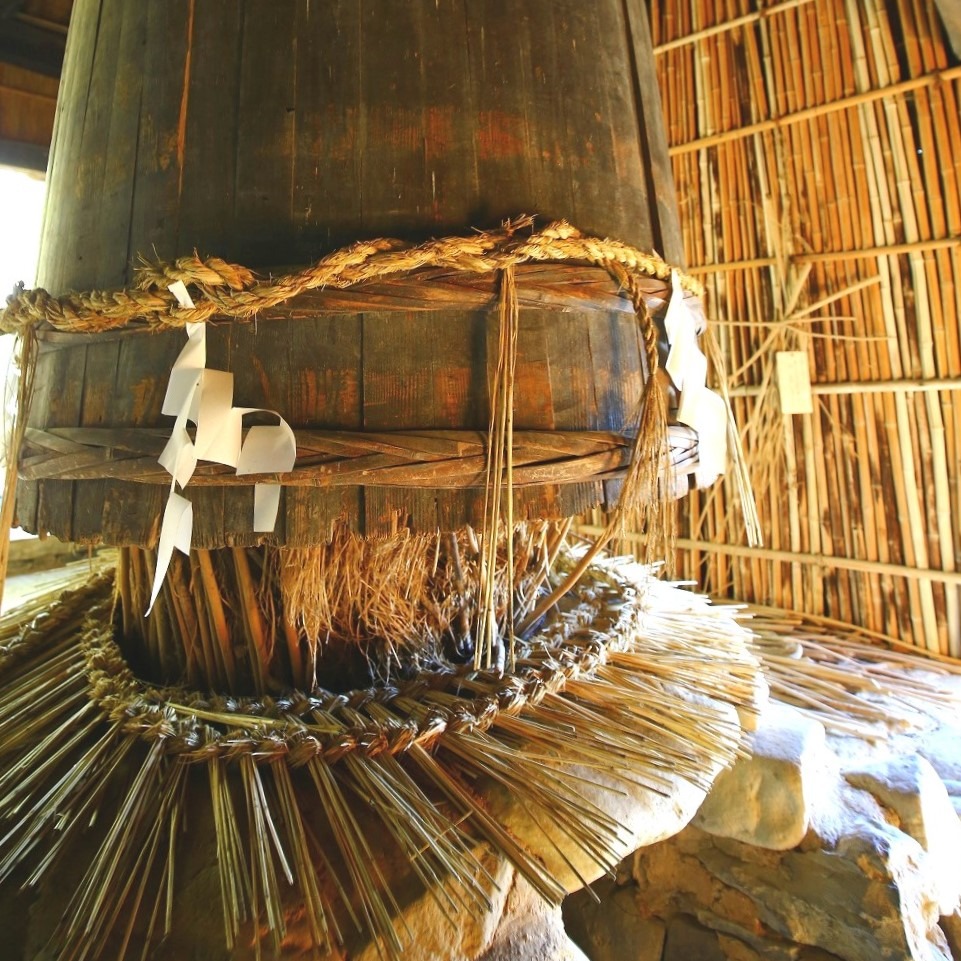Bark-steaming Hut
- Period:
ca. 1920s (Late Taisho into Early Showa)
- Former Location:
Yusuhara, Takaoka, Kochi Prefecture
- Designation:
Registered Tangible Cultural Property
A reminder of washi production, a traditional community industry
Cultivating kozo (paper mulberry) and mitsumata (Edgeworthia chrysantha), the raw materials for washi paper, was once a thriving industry in the mountains of Shikoku, and washi making was a local industry using those raw materials. This hut was used to steam those raw materials. The roof is a typical yosemune-zukuri (*1) thatched structure, but more unusually, the walls are also surrounded by thatch. It has a large stone kamado stove in the center with a large vat hanging above it like a bell. This vat was lowered over a kettle filled with water to steam the ingredients.

Stove and vat
In the steaming process, the first step in making washi paper, bundles of cut kozo and mitsumata were stood up in a pot, then the pot was covered with the vat for steaming.
After the kozo and mitsumata are steamed, the rinds are peeled off and the black membrane removed after soaking, then the remains are softened with lye or other alkali. The pulp is cleaned by hand, and the pulp, which is tangled like a net, is beaten with a stick to break up the fibers. Then, the pulp is soaked in water with a plant-based thickener, and then scooped into a frame. The process was long, difficult, and repetitive.
*1: Yosemune-zukuri—A type of hipped roof structure where the surfaces descend from the ridge in four directions.





























